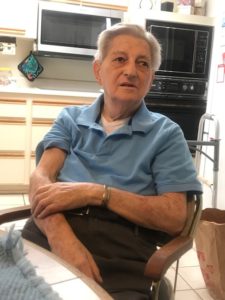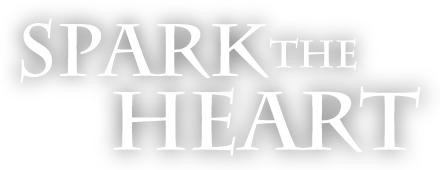A story about my father, from 2001

Parallel lines are lines that never intersect. For infinity. Or maybe they intersect in infinity, I can’t remember. So I ask my father. “The definition of parallel lines must consider whether you are in a plane or in three dimensional space,” he says. My father’s answers are never simple.
My father is a mathematician. He graduated Summa Cum Laude from Carnegie Mellon, earned the prize in Solid Geometry when he was in high school for proving an answer incorrect on the New York State Regents exam. He can perform long division in his head, calculate the square root of any number and convert decimals to fractions and back again without hesitation. My father is the only person I know who actually knows how to use a slide rule.
I, on the other hand, have always struggled with math. Not the memorization of simple arithmetic, but the intangible concepts of numbers and exponents in space. In high school my father helped me with my algebra and geometry and every time, I was reduced to tears because he couldn’t understand that I just didn’t get it. But my mother, who’d been listening too, came to my rescue, She’d ply me with Hershey’s Kisses as we subtracted numbers from one side of the equal sign, and then the other, until my homework assignment was done.
My affinity is with words. I love the shapes of letters on a clean white page, the spontaneity of sound and language. My father finds security in equations, logic, reason. Sometimes it is very difficult for us to communicate.
Last year my father took me to the science museum for Father’s Day. In the Hands-On Exhibit room we sat at opposite sides of a table with a partition between us for a Communication Activity.
We each had six cardboard shapes in front of us: two triangles, two squares and two rectangles. My father was the Sender so he had to create a pattern with the shapes, and then describe it so that I, the Receiver, could reproduce it.
“I have a yellow rectangle on top of a red square,” he said. “Then I have a green triangle on top of the rectangle and one of the vertexes is pointing to the top left corner of the square.”
“I don’t know what a vertex is.”
“Every triangle has three vertexes.” He held up a green triangle and pointed to the corners.
I always thought those were the angles.”
“The angle is the inside measurement,” he said. The vertex is where the lines intersect.”
I placed my red square on the table in front of me and moved the smaller yellow rectangle above it, like it was the roof of a house. I put the green triangle above the roof and turned it sideways so it looked like an ice cream cone pointing to the corner of the square.
“OK,” I said, “Let’s see how I did.”
I looked over the partition at my father’s pattern. His shapes were literally on top of one another.
“You should have said ‘stacked on top of each other,’” I said.
“I said on top of,” he said. “You weren’t thinking three dimensional. In three dimensional space, two parallel lines can be distinct or coincident, having no points or infinitely many points in common.”
As always, I didn’t quite understand what he was saying, but somehow I think it has to do with how we all are on this earth, connected by an infinite combination of coincidences. And I realize that his language of numbers may be his way to express these same things that I am trying to say with words.
I don’t say this to him. Instead, we move on to the “Do You Have Your Father’s Nose” exhibit, and sit on either side of a two way mirror so that our features are superimposed on each other. Our eyes and mouth don’t look the same, but yes, I have my father’s nose.
ADDENDUM:
My father passed away this week at the age of 90. I imagine him swirling in happiness in a sea of numbers and equations, on the plane where parallel lines finally intersect.
My father passed away this week at the age of 90. I imagine him swirling in happiness in a sea of numbers and equations, on the plane where parallel lines finally intersect.
